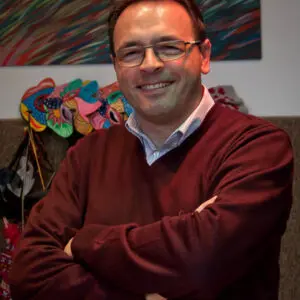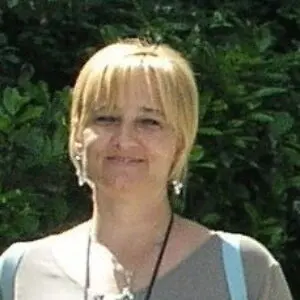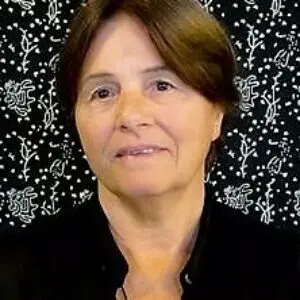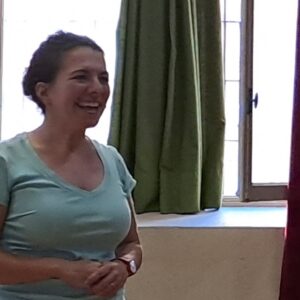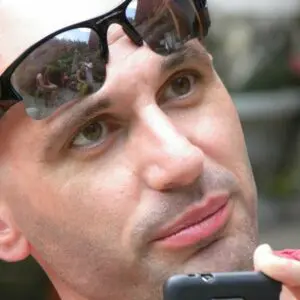Psicodramma Classico – Anno VI n. 1-2, Settembre 2004
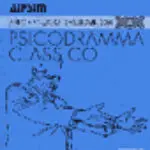
- Codice: M2640
- Sottotitolo
- Liberazione dal passato e presa di coscienza
- Autore
- Sergio Bernazzani
- Sommario
-
La catarsi è un fenomeno naturale di cui la natura ci ha fatto dono; nella terapia è un evento tipico connesso alle situazioni di gruppo, in particolare quelli condotti con modalità d’azione. Se il gruppo si è costituito in conformità ad una relazione telica tra i partecipanti, se diventa un contenitore positivo della soggettività dei suoi membri, il fenomeno della catarsi può realizzarsi con successo. In questo caso la catarsi è ben lontana dall’essere una manifestazione incontrollata e pericolosa in un contesto inadeguato.
■ ABSTRACT CATHARSIS IN THE PSYCHODRAMA GROUP Getting rid of the past and acquiring self conscience Catharsis is the great gift that nature gave us. In therapy it is a typical event related to group situations, especially in groups directed through action. If the group is built according to a web of relations between its participants, if it becomes a positive container for the subjectiveness of each of its members, the phenomenon of catharsis may happen successfully. In these conditions, catharsis is far from being the uncontrolled and dangerous manifestation that may, on the other hand, incur in the wrong context. - Codice
- M2640-1-1
- Acquista Articolo
- Sottotitolo
- L'attivarsi della funzione di rispecchiamento nella fase di sharing
- Autore
- Claudia Venturino
- Sommario
-
L’articolo focalizza l’attenzione sulla fase dello sharing, evidenziandone le potenzialità terapeutiche per l’intero gruppo. Grazie al meccanismo del rispecchiamento, infatti, il lavoro con il protagonista diventa, per ogni membro del gruppo, una possibilità di far esperienza di sé attraverso l’altro, sperimentando in rapida successione i processi di immedesimazione e di individuazione. Riguardo alla terapeuticità di tale processo, viene posto l’accento sull’esperienza del “non sono il solo a…” che consiste nello scoprire che sentimenti, pensieri e azioni proprie, magari etichettati come vergognosi o indegni, sono invece comuni anche ad altri. Ci si sente allora un po’ più normali, un po’ meno soli di fronte ai propri limiti. Per questi motivi l’autore auspica che il tempo dedicato allo sharing sia sempre sufficiente a far sì che ognuno abbia un adeguato spazio a sua disposizione per esprimere i propri vissuti.
■ THE SHARING AS A TERAPEUTIC MOMENT IN THE GROUP The reflecting function activation in the sharing phase The article focuses on the sharing phase and on its therapeutic potential for the whole group. Thanks to the reflecting mechanism, each of the group members may find, through the work with the protagonist, a self experience creating, in rapid succession, the processes of identification and individualization. This is therapeutic because it generates the thought: “I’m not the only one who…” which means that everyone can discover that the actions that he might consider disgraceful or abominable are common to other people. This makes everyone feel more normal and less alone with his own limitations. For these reasons the author hopes that time devoted to sharing may always be long enough to give everyone a sufficient space to express his own feelings. - Codice
- M2640-1-2
- Acquista Articolo
- Sottotitolo
- Esperienza di un gruppo di trattamento psicodrammatico con detenuti tossicodipendenti
- Autore
- Paola De Leonardis
- Sommario
-
Nell’articolo viene presentata l’esperienza di un gruppo di trattamento con metodo psicodrammatico condotto dal marzo 2003 al febbraio 2004 con detenuti della Sezione Tossicodipendenti della Casa Circondariale del Comune di Busto Arsizio, in provincia di Varese. Il trattamento con psicodramma aveva avuto inizio già l’anno precedente (marzo 2002) ed esso continua tutt’oggi. Tuttavia si è scelto di circoscrivere il presente resoconto all’arco di tempo indicato in quanto esso segna il percorso definito di un gruppo che si era formato appunto a quell’epoca e si è praticamente sciolto dopo un anno, per ricomporsi successivamente senza soluzione di continuità con altre persone. L’articolo riporta le modalità di applicazione del metodo nel contesto specifico, gli esiti dei test clinici scelti per monitorare l’attività, l’osservazione psicodinamica di due casi individuali e l’osservazione clinica del gruppo attraverso gli indicatori di cambiamento previsti dall’intervento. PSYCHODRAMA IN PRISON Experience of a psychodrama therapy group with drug addict prisoners ■ ABSTRACT The article presents the experiences gathered working with a therapy group using psychodrama, between March 2003 and February 2004, with the convicts of the Drug Addiction Wing of the Busto Arsizio Prison, near Varese. Psychodramatic therapy had already begun the previous year (March 2002) and is still being conducted today. Nontheless, the author decided to limit the article to this timeframe, as it focuses on the complete path of a single group that had formed itself in that period and was disbanded the following year, before reforming itself seamlessly with other members. The article reports on how the psychodrama techniques were applied to this specific context, the results of clinical tests that were carried out to monitor the results, psychodramatic observation of two individual cases and clinical observation of the whole group, using the usual change indicators required by this therapy.
- Codice
- M2640-2-1
- Acquista Articolo
- Sottotitolo
- Psicodramma nel grande gruppo: regia, parole ed emozioni
- Autore
- Paolo Carrirolo
- Sommario
-
L’autore presenta una riflessione sulla conduzione psicodrammatica dei grandi gruppi, che superano le cinquanta unità. Prende in considerazione tre aspetti che a suo parere costituiscono elementi importanti per la buona riuscita di una conduzione, in particolare nel momento della presa in carico: il livello della regia, quello relativo alla comunicazione verbale ed il livello della comunicazione emotiva che si stabilisce tra il conduttore ed il grande gruppo. Ciascun livello è corredato da esemplificazioni, in forma narrativa, di conduzioni di grande gruppo. ■ THE BIG GROUP Psychodrama in the big group: direction, words and emotions The autor presents a consideration about a psychodramatic conduction of big groups, composed by more then fifty people. He considers three aspects that he deems important elements for a good conduction: the quality of direction, the level of verbal comunication and that of emotional comunication. Each of these is illustrated with narrative examples taken from big group direction experiences.
- Codice
- M2640-3-1
- Acquista Articolo
- Sottotitolo
- Elementi della psicologia della Gestalt nella teoria e nel metodo psicodrammatico
- Autore
- Anna Boeri
- Sommario
-
Viene presentata una esperienza triennale di “formazione al conflitto”, nell’ambito di un corso annuale di specializzazione del CPP (Centro Psico-Pedagogico per la Pace e la Gestione dei Conflitti) di Piacenza, che vede una compresenza dello psicodramma moreniano e delle tecniche di autobiografia educativa. Attraverso l’uso della funzione del doppio in intervista autobiografica, delle foto d’infanzia e degli episodi di conflittualità educativa, i partecipanti vengono aiutati a connettersi con le loro modalità interne di gestione dei conflitti. L’obiettivo è quello di aiutarli a vivere positivamente il conflitto, per sé e per gli altri nella consapevolezza delle valenze emotive e autobiografiche dello stesso. MORENIAN PSYCHODRAMA AND EDUCATIONAL AUTOBIOGRAPHY A synergic path towards conflict elaboration. The results of a three year long experience in the “formation of conflict” gathered in a yearly specialization course at the CPP (Psycho-Pedagogical Center for Peace and for the Treatment of Conflict) of Piacenza. Morenian psychodrama was used together with the techniques of educational autobiography. Using the functions of a double in an autobiographical interview, together with childhood pictures and episodes of educational conflictuality, those who attended the course were shown how to connect with their internal means of conflict treatment. The aim is to help them live their conflict with a positive attitude, both for them and for others, considering the emotional and autobiographical values of the conflict itself.
- Codice
- M2640-4-1
- Acquista Articolo
- Sottotitolo
- Sensibilizzazione alla relazione interculturale : un’esperienza di formazione con approccio sociodrammatico
- Autore
- Chiara Spotti
- Sommario
-
L’articolo fa riferimento ad un percorso formativo sviluppato a partire dai risultati delle ricerche sulla comunicazione interculturale. Attraverso l’esplorazione sociodrammatica degli stereotipi su italiani e tedeschi si è inteso promuovere l’incontro fra i membri del gruppo sviluppando una più complessa percezione di sé e dell’altro in quanto singoli individui che agiscono sullo sfondo di una cultura di appartenenza. “STRANGERS, FOREIGNERS” Awareness raising in cross-cultural relations – professional training with a sociodramatic approach The article reports on a course of professional training which was developed with reference to the results of researches on cross-cultural communication. By choosing a sociodramatic approach for the exploration of stereotypes of Italians and Germans, the author intends to promote and encourage contacts while favouring the development of a more complex perception of oneself and of the ‘other’ as single individuals whose way of acting is influenced by the culture which they belong to.
- Codice
- M2640-4-2
- Acquista Articolo
- Sottotitolo
- Efficacia del sociodramma nel lavoro con grandi gruppi
- Autore
- Luigi Dotti
- Sommario
-
L’autore descrive un’esperienza formativa condotta con metodologia sociodrammatica con un gruppo di operatori dell’area handicap sul tema “disabilità e sessualità”. L’articolo intende mettere in luce la specificità dell’intervento sociodrammatico nell’attività formativa. ■ ABSTRACT The author describes an educational workshop on “disability and sexuality”, carried out with sociodramatic method for a group of psychologist and social workers engaged in handicap area. The articles intends to show the specificity of the sociodramatic intervention in the training activity.
- Codice
- M2640-5-1
- Acquista Articolo
- Sottotitolo
- Stimoli e riflessioni sul territorio condiviso da psicodramma e arte
- Autore
- Maria Elena Garavelli
- Codice
- M2640-6-1
- Acquista Articolo
- Sottotitolo
- Intervista a Mario Buchbinder e Elena Matoso
- Autore
- Mario Valzania (a cura di)
- Sommario
-
Traduzione di Laura Beltrami
- Codice
- M2640-7-1
- Download Articolo
- Codice
- M2640-8-1
- Download Articolo









